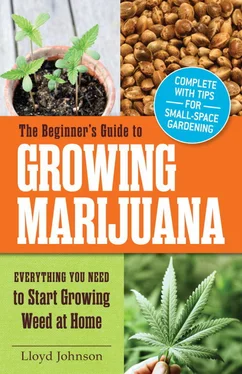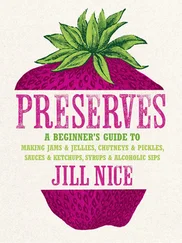Indoor plants are usually grown in more crowded conditions, especially during their vegetative stage, but investing in fans for good air circulation and dehumidifers for moisture control will help keep the plants from molding. And with the ability to control their growth by controlling light, you can have shorter plants as well as a much shorter grow cycle than required for an outdoor crop.
One very important factor to consider as you plan: what kind of budget are you working with?
Indoor Costs
Indoor growing can be particularly hard on the pockets. A small indoor grow can run to $400 per month very easily, and that is just for ongoing electricity costs. The initial purchase of building materials for vegetative and flowering rooms (each of which requires a different light cycle and different lights), fans, dehumidifiers, filters, ballasts, grow lights and the bulbs (which wear out and need replacing), containers, and soil can be prohibitive. Other ongoing expenses include renewing the soil mixture for each crop, different mineral additives, and water bills.
Keep It Simple
Both indoor and outdoor grows are safer with security systems. Your budget will decide whether you go with a large dog or an expensive and sophisticated alarmed motion detecting system. Once installed, however, a carefully considered system will prevent a lot of anxiety.
Outdoor Costs
Outdoor growing has the advantage of using the sun for free. Other than that bonus from nature, you must factor in the start-up costs of fencing, improving your soil, water, mineral additives, and a drying area for after the harvest.
Fencing needs to be high and of stout materials. It has three functions: to screen your garden from casual observers, to keep out livestock and wild browsers like deer, and to keep out rippers. For optimizing ripper protection, use a high boarded fence to minimize visibility, electric wire on the inside of the fence top to discourage climbers, and heavy-gauge wire or stock panels around the plants.
Soil improvement can involve digging out compacted clay soils and replacing with your own compost and a sandy loam mix, or replacing with expensive, bagged organic soils. It all depends on the initial condition of your site’s soil. The more years you use a site, the better your soil will become, but it will always need mulches, new compost, and minerals each time you renew your garden.
Outdoor Money-Saving Ideas
If expenses are a major concern, plan ahead and improve your soil by mulching and composting with free materials. Leaves are everywhere in the fall and are an excellent choice for improving soil. Mulch your areas in the fall and till in the composted leaves in the spring. Rain-spoiled hay is usually available for free or very cheaply in the country and is an excellent mulch.
When drying the crop, consider the expense for a dedicated building or drying room, purchasing fans and dehumidifiers, and the accompanying electrical bills to power them.
Money Smart
Investigate local livestock owners and the availability of manures; goats, chickens, horses, and cows are all great producers, and usually you can get wonderful nitrogen-rich compost makings for free. Small farmers are usually delighted to have some effluent move along at no expense or labor to themselves.
The Co-op Advantage
Another possibility for a first-time grower is to think about a cooperative grow. This provides an opportunity to share information and strains, as well as expenses and space. If you can join a cooperative with a master grower already in place, you can learn in a hands-on environment.
Growing cannabis in a cooperative is also a great low-cost option, particularly for the new grower. If one grower has the land, others can provide labor and supplies, or share in costs for water, minerals, and other costs of production.
Another benefit is in sharing the security duties; you may not enjoy being constantly tied to your crop until harvest. A partner or partners in a crop can help each other and, of course, help with the harvesting and cleaning of the final crop.
Choosing the Right Strains
Once you have decided where to grow (indoors, outdoors, or a mixture of both), what strains of cannabis will give you the optimum chance of success? Cannabis breeders have spent years modifying plant characteristics, so where the strains are typically grown can give you your first clue as to what might optimize your growing success.
Indoor
Generally, indoor plants that have been hybridized for that purpose have had the height bred out of them; the goal is short, productive, mold- and pest-resistant plants. The grower has the option of starting the flowering cycle by light trigger and limiting vegetative growth, but the overall form and lankiness of pure sativas do not lend themselves well to indoor grows. Pure indicas or sativa/indica hybrids will generally perform much better and lead to happier results for the grower.
Most new growers are better off starting small. Growing cannabis is an expensive proposition, whether indoors or outdoors, and it is best to start out slowly and see if you really have the time and money required. Experience whether you enjoy or dislike the process, and test out how viable and secure your envisioned grow site truly is.
If nothing else, your experiments in growing will make you a wiser and better consumer, with more understanding of how and why one grower’s cannabis is better than another’s. There is no shame in deciding that you are not cut out to be a grower; appreciative consumers are always needed for any product and are, in return, appreciated by the grower who grows for the love of it.
Outdoor
Outdoor plants need an environment that matches their genetic predisposition. For example, a hybrid cross that introduces an indica, like the classic Northern Lights, will do much better somewhere like the Pacific Northwest. This is where the importance of provenance and knowing the growing characteristics of a strain (its finish, typical plant structure, and mold resistance) are extremely helpful.
It is interesting to note that the same strain, started indoors and then moved to an outside grow, will look very different from the original mother plant grown from seed outdoors. This is an example of how the genotype expresses differently in different environments and how early the adaptation starts. A plant started indoors and then transplanted outdoors usually grows very bush-like, while the 100 percent outdoor-grown plant will have a more tree-like appearance with a thick trunk and longer axials. Due to the outdoor cycle’s long growing period, and chances of rain soaking the plant near harvest time, the tree-like structure is more suited to an outdoor grow. Its air circulation is better than a super-bushy, dense structure that is more prone to molds if the leaves get watered. The indoor grower has less concern, as you can control where you water.
CHAPTER 3
Growing from Seeds or Clones
An individual cannabis plant has its own genetically determined unique characteristics, or genotype. You’ll want to propagate your plants selectively in order to replicate desirable characteristics; in the cannabis plant these characteristics can include psychoactive effect, medical effect, aroma, taste, size, and flower type. The genotype can be influenced environmentally and ultimately expressed visibly in what is called the phenotype. This can be seen by growing two genetically identical plants under different conditions. One grown in shade might appear very long and tall, compared to its clone grown in full sunlight that matures as a more compact, bushy-looking plant. To ensure a successful result, start with the best individuals you can procure, and provide the correct environment.
Читать дальше












